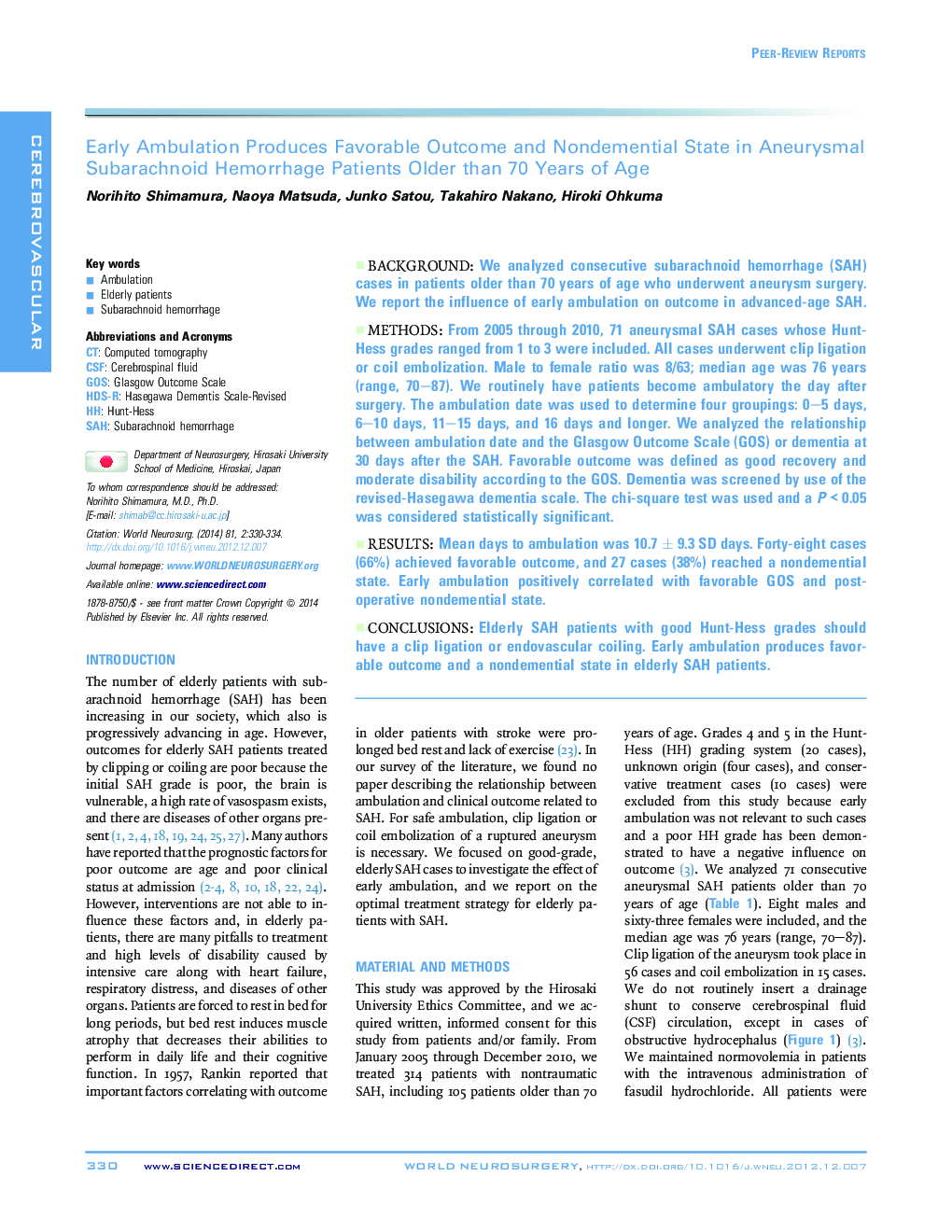| Article ID | Journal | Published Year | Pages | File Type |
|---|---|---|---|---|
| 3095724 | World Neurosurgery | 2014 | 5 Pages |
BackgroundWe analyzed consecutive subarachnoid hemorrhage (SAH) cases in patients older than 70 years of age who underwent aneurysm surgery. We report the influence of early ambulation on outcome in advanced-age SAH.MethodsFrom 2005 through 2010, 71 aneurysmal SAH cases whose Hunt-Hess grades ranged from 1 to 3 were included. All cases underwent clip ligation or coil embolization. Male to female ratio was 8/63; median age was 76 years (range, 70–87). We routinely have patients become ambulatory the day after surgery. The ambulation date was used to determine four groupings: 0–5 days, 6–10 days, 11–15 days, and 16 days and longer. We analyzed the relationship between ambulation date and the Glasgow Outcome Scale (GOS) or dementia at 30 days after the SAH. Favorable outcome was defined as good recovery and moderate disability according to the GOS. Dementia was screened by use of the revised-Hasegawa dementia scale. The chi-square test was used and a P < 0.05 was considered statistically significant.ResultsMean days to ambulation was 10.7 ± 9.3 SD days. Forty-eight cases (66%) achieved favorable outcome, and 27 cases (38%) reached a nondemential state. Early ambulation positively correlated with favorable GOS and postoperative nondemential state.ConclusionsElderly SAH patients with good Hunt-Hess grades should have a clip ligation or endovascular coiling. Early ambulation produces favorable outcome and a nondemential state in elderly SAH patients.
